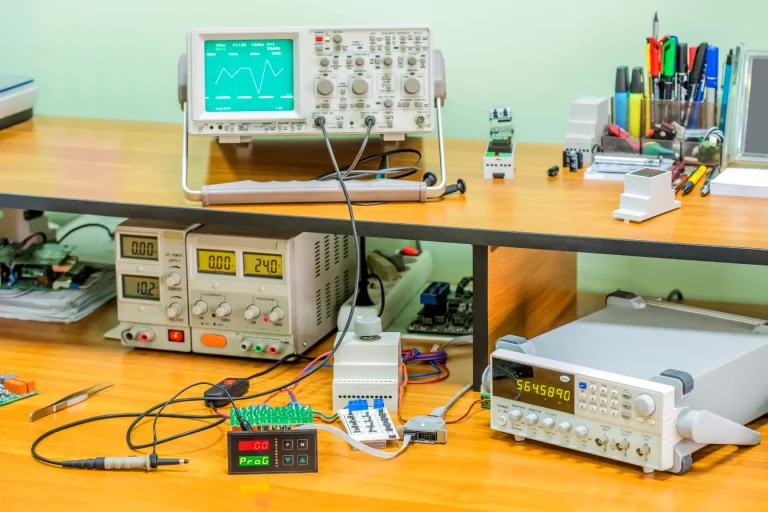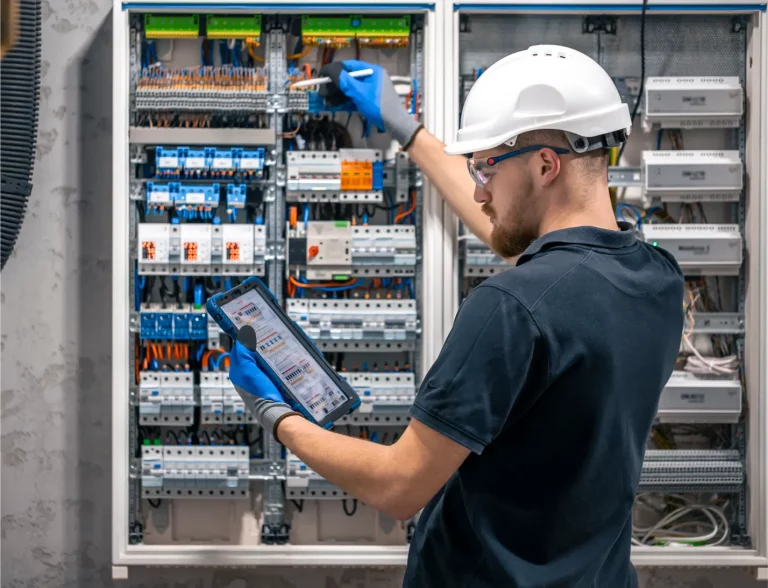Electrical Quality / Disturbance
- Electrical Energy
- Electrical Quality / Disturbance


Optimizing Electrical Quality
Electrical quality, often referred to as power quality, refers to the characteristics of an electrical supply that determine its ability to power electronic and electrical equipment without causing malfunctions, premature wear, or failures. It is crucial in industrial, commercial, and domestic environments because poor power quality can lead to production downtime, financial losses, and safety risks.
Here are some important aspects of electrical quality:
- Voltage:
- Voltage variations: These are increases or decreases in voltage that can occur and affect sensitive equipment.
- Voltage drops: Temporary reduction in voltage.
- Voltage surges: Temporary increase in voltage.
- Frequency:
- A supply must maintain a stable frequency. Deviations can affect the performance of devices.
- Harmonic Distortion:
- Non-linear devices (such as variable speed drives, computers) can generate harmonics that distort the waveform of voltage or current. This distortion can cause energy losses and damage equipment.
- Flicker:
- Rapid voltage variations, perceived as flickering lights.
- Voltage Sag:
- Sudden but brief reduction in voltage, often due to short circuits or starting large motors.
- Power Outages:
- Total interruption of electrical supply for a certain period.
To evaluate and manage electrical quality, tools such as network or power analyzers are used to measure various parameters of the distributed energy. Good electrical quality is essential for ensuring the reliability, safety, and efficiency of electrical installations.
Poor electrical quality can lead to various nuisances that can affect both equipment and installations, resulting in significant economic and safety consequences. Here are the main nuisances associated with poor electrical quality:
Equipment Failures:
- Overheating: Harmonic distortions and voltage variations can cause overheating of electrical equipment, reducing its lifespan.
- Unexpected Shutdowns: Sudden drops or rises in voltage can lead to unexpected shutdowns of industrial machines, computer servers, or other critical devices.
- Damage: Voltage surges can damage sensitive electronic circuits, requiring costly repairs or replacements.
Industrial Process Disruptions:
- Production Loss: In industries, poor power quality can lead to production downtime, product defects, or degraded machine performance, affecting productivity and profits.
- Costly Restart: Restarting systems after an interruption can take time and incur additional costs.
Increased Energy Consumption:
- Energy Losses: Harmonics and load imbalances increase energy losses in networks, leading to higher energy consumption and operating costs.
- Reduced Efficiency: Equipment operating under unstable or poor-quality power can see reduced efficiency, leading to unnecessarily high energy consumption.
Impact on Comfort and Safety:
- Disruption of HVAC Systems: Poor power quality can lead to malfunctions in HVAC systems, affecting the comfort of building occupants.
- Light Flicker: Flicker can be not only annoying but also straining on the eyes, especially in work environments.
- Safety Issues: In sensitive environments (hospitals, industrial facilities), poor power quality can compromise safety, for example, by disrupting alarm systems or medical equipment.
Deterioration of Electrical Infrastructure:
- Wear of Transformers and Cables: Harmonics and overcurrents caused by poor electrical quality can accelerate wear on transformers, cables, and other network components.
- Increased Maintenance: Poor power quality requires more frequent maintenance of electrical equipment, increasing operating costs.
Compliance Issues:
- Non-compliance with Standards: Companies may fail to meet power quality standards imposed by regulators, leading to fines or sanctions.
In summary, poor electrical quality can have significant impacts on equipment reliability, operating costs, productivity, and even personal safety. It is therefore essential to monitor and improve electrical quality in installations to avoid these nuisances.



